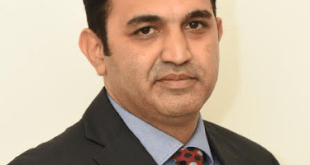Bone cancer is not a common cancer, but can be termed as a fatal one. Although Bone cancer makes up for a small share of the total cancer cases observed across the world, its impact is deeply felt, both physically and mentally. The causes of Bone cancer, largely remains unclear. Over a period of time, cancer specialists have noticed certain factors that seem to raise the risk. But having any of these symptoms does not increase the possibility of Bone cancer. At this juncture, it is important to be vigilant, as it would help us to catch the problems early.
Bone cancer are of many types. The most commonly identified are the primary types — Osteosarcoma, Ewing Sarcoma, and Chondro-Sarcoma. Each of these tends to show up differently and the risk factors often depend on both the person’s age and the cancer type.
Age is one of the most crucial factors observed in bone cancer cases. Osteosarcoma often shows up in children and teens, especially during growth spurts. Ewing Sarcoma also tends to affect younger people. Chondrosarcoma, by contrast, is more common in older adults. While age doesn’t directly cause cancer, some types do appear more often at certain stages of life.
Having received radiation in the past—particularly for another cancer—can slightly raise the chances of developing a bone sarcoma later on. This link is mostly seen in people who were given high-dose radiation, often many years before the bone tumour appears. This is especially relevant in those patients who are treated during childhood or adolescence, when developing bones may be more sensitive to radiation’s long-term effects.
In a small number of cases, bone cancer risk is observed to be hereditary. Conditions like Li-Fraumeni syndrome, hereditary retinoblastoma, or Rothmund-Thomson syndrome—though rare—can make a person more likely to develop cancers like Osteosarcoma. When these genetic issues are found in a patient, doctors usually keep a closer eye, since the chances of cancer cells showing up earlier or more often may be higher.
Chronic bone conditions, such as Paget’s disease of bone, have also been associated with a higher chance of bone cancer, especially in older adults. Paget’s disease leads to abnormal bone remodelling, which may increase the risk of malignancy over time.
Infections, injuries, and implants have been studied, but the evidence linking them to bone cancer remains limited and inconsistent. There is no clear proof that a bone injury—such as a fracture can cause cancer. Although, tumours are sometimes discovered post trauma as the affected area was examined more closely.
In India, one of the biggest challenges is delayed diagnosis. Symptoms like bone pain or swelling are often mistaken for common issues—like joint pain, growing aches, or past injuries—especially outside urban centres. Bone tumours are only visible when they’ve advanced, making treatment more difficult and outcomes harder to improve. Raising awareness among general practitioners and patients about the necessary investigations or unexplained bone symptoms is critical.
In many cases, there is no identifiable risk factor. Bone cancer can and does occur in people with no family history, no known genetic mutations, and no prior exposure to radiation. It is important to pay attention to the symptoms that persist.
If the bone pain does not resolve in a few weeks and is worse at night or comes with swelling or reduced movement in a limb, it is important to get evaluated. An X-ray is often the first step, followed by an MRI or biopsy if needed. Early diagnosis improves treatment outcomes significantly.
While we cannot always control the occurrence of bone cancer, we can control how quickly we respond. Knowing the risk factors helps—but staying alert about these symptoms and seeking timely specialist care matters.
By Dr. Sangram Keshari Panda (Consultant- Surgical Oncologist), HCG Cancer Center – Cuttack
 Newspatrolling.com News cum Content Syndication Portal Online
Newspatrolling.com News cum Content Syndication Portal Online







